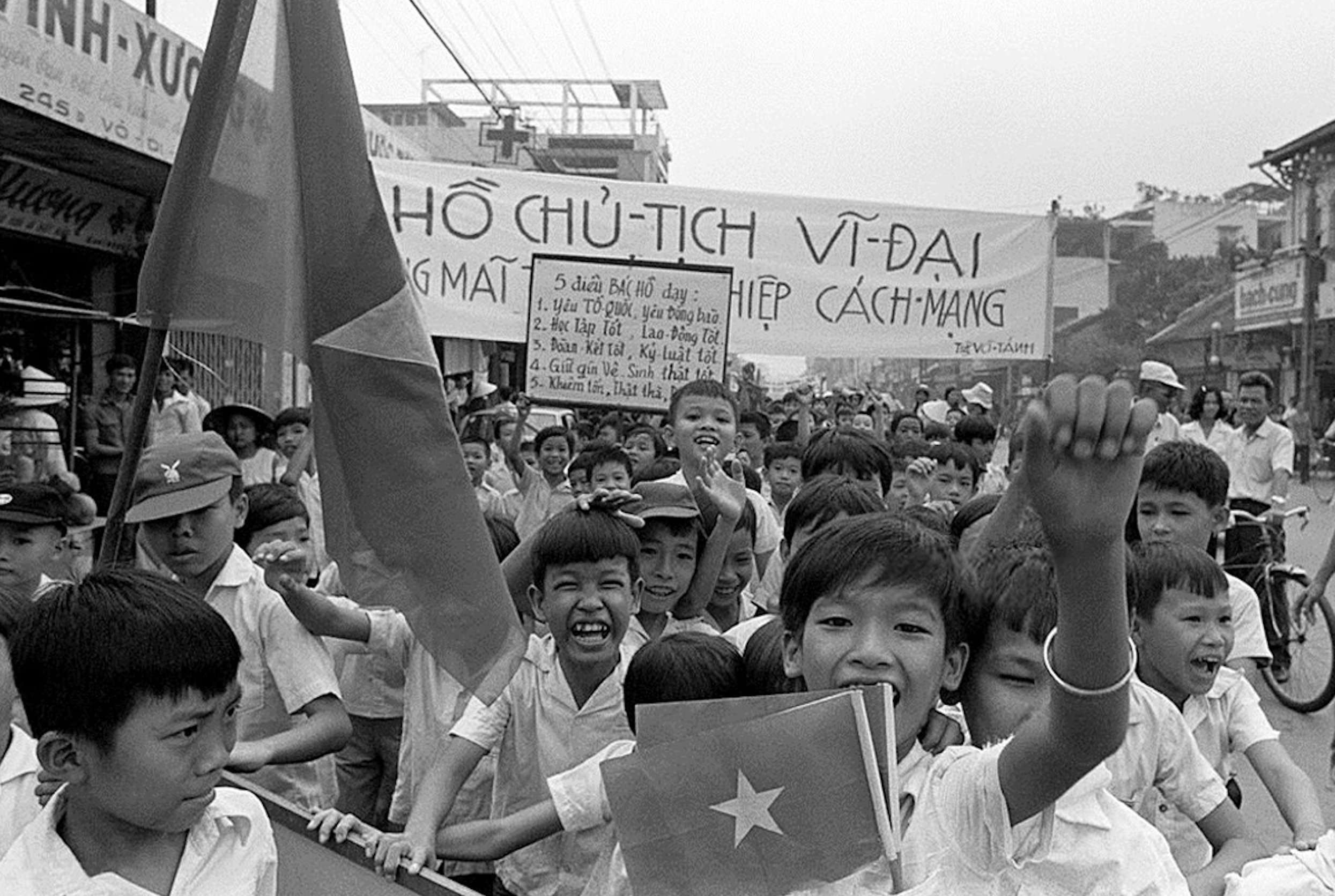In 2012, Ms. Tra (midwife, Tu Du Hospital) faced two milestones in her life at the same time: having a child and taking the university entrance exam. At the age of 30, she longed to be a mother, but also did not want to miss the opportunity to get a bachelor's degree - a step forward in her career. Regretting that "not every year the agency sends her to study", she decided to study for the entrance exam to Ho Chi Minh City University of Medicine and Pharmacy despite being pregnant.
Four days before the exam, she went to the hospital by herself. The young mother wanted to give birth naturally to recover quickly, but mid-labor was not favorable, the doctor said she had to have a cesarean section.
"There is no pain worse than labor. It's horrifying," she described the pain of having to go through both natural and cesarean births.

Mother and child were safe. She held her baby in her arms and sucked the first drops of colostrum, while her eyes continued to read the study materials, despite her colleagues' dissuasion. Three days after giving birth, the young mother took painkillers and took the university entrance exam while the incision was still not dry.
That was the first and last time she gave birth. Even though she worked in a place where more than 200 babies were born every day, she had long ago decided to stop at one child, ignoring the city's two-decade-old call to "have two children."
Ms. Tra is typical of a generation of women in Ho Chi Minh City after 2000 - where each person gives birth to an average of 1.24-1.68 children, 20-30% lower than the national average. Meanwhile, the replacement fertility rate - the average rate to maintain a stable population size - is about 2.1 children per woman. For many years, Ho Chi Minh City authorities have expressed concern about a future of declining population, which means a shrinking workforce, slowing the growth momentum of the "locomotive".
Economic growth and declining birth rates are common trends in many developed countries. In South Korea, the country with the lowest birth rate in the world (0.78 children per woman), the economic hub of Seoul has the lowest birth rate (0.59). In China, a country that has implemented a one-child policy for nearly 40 years, megacities like Beijing and Shanghai have birth rates of only about 0.7.
For Ho Chi Minh City, this trend has lasted for nearly two decades. Except for 2017, for the past 16 consecutive years, the city of 10 million people has ranked at the bottom of the country's fertility rankings, according to data from the General Statistics Office. Having two children has become a "thirst" for the Ho Chi Minh City population sector for a long time, instead of trying to encourage people to "stop at two children to raise them well" like many other localities.
In 2020, for the first time, the birth rate became a target in the 5-year term resolution of the City Party Committee. The goal by 2025, the total fertility rate of Ho Chi Minh City will reach 1.4 children/woman, and increase to 1.6 in the next 5 years.
Every year, Ho Chi Minh City spends about 700 million VND on communication activities to raise awareness about population such as: hanging banners, making propaganda films, organizing seminars... However, this solution is not effective as the city has maintained the bottom position in terms of birth rate for nearly two decades.
Women like Ms. Tra have many reasons to refuse to "quench" the city's thirst for newborn babies.

As the fifth child in a family of seven children, Ms. Tra witnessed the transition between two generations - from the generation where parents gave birth to children immediately, without the concept of "family planning", the family size is now reduced to 1-2 children - a complete reversal from the trend of 20 years ago. The center of that change lies in mothers and wives.
Growing up in a time when women were stereotyped as “good at public affairs and good at home,” Ms. Tra started working at the age of 13, went to Saigon to start a business alone at 22, and then became the family’s breadwinner. Unlike her mother, who gave up all her personal desires to take care of her 7 children, she had her own plans.
"For me, family is family, career is career, I have to arrange both well in parallel, I can't consider or prioritize one," said the 41-year-old woman.

When her daughter was three months old, Ms. Tra received notice of her university admission. A month later, she ended her maternity leave early and returned to work. From there, the 30-year-old woman began her "three-task" journey: being a mother, a student, and a midwife at the hospital.
Like the 9 months of pregnancy, she did almost everything alone. Her husband was a soldier, stationed in Dong Thap, and only came home once every 3-4 months. Both her paternal and maternal grandparents lived in Ben Tre, a 3-hour drive from Ho Chi Minh City, and they especially did not like to go to the city, and could only stay there for a maximum of a week.
Until now, she is still haunted by the days of struggling to find a way to leave her child with relatives, neighbors, or carry her to the hospital to work the night shift. When her child was in kindergarten, she paid extra for a private school teacher to look after her until 9-10 pm - when she finished her second job at the clinic after her shift at the hospital. When her child entered primary and secondary school, she chose a school near her workplace for convenience.
At 5:45 a.m., mother and child leave the house. Although she loves soups like noodles and pho, she can only eat breakfast quickly behind her mother on the way, sometimes sticky rice, sometimes rice cakes, dumplings... Outside of class, most of the time her child is in the hospital, finding her own hobbies like reading books, drawing, waiting for her mother to come home at night.
Seeing many pregnant women coming for prenatal check-ups and giving birth every day, and her daughter sometimes wishing for a younger sibling to play with, Ms. Tra once wavered. However, this thought was quickly extinguished after 11 hours of work each day, along with 2-3 hours of travel on the road.
"I feel sorry for my child because I don't have enough time to spend with him. Now having another child is even more of a pity, so I give up," she said about the torment of 12 years of motherhood.
Late marriage and having few children is a trend, according to Pham Chanh Trung, Director of the Ho Chi Minh City Department of Population and Family Planning. This is partly the result of the previous long-term family planning policy and changes in the concept of family formation.
The average age of first marriage in Ho Chi Minh City is now 29.8 – a record high in Vietnam, and nearly three years older than the national average. The city also tops the list for the single rate – 36% of adults in the city are unmarried, compared to the national average of 24%.

Mr. Trung analyzed that there are two groups of reasons for the decrease in birth rate in Ho Chi Minh City: couples do not want, or do not dare to have more children.
The first group is worried about family burdens, living environment, medical conditions, education, and especially opportunities for personal development and advancement. More than 83% of workers in Ho Chi Minh City work more than 40 hours per week, while the national average is nearly 72%, according to the General Statistics Office. As a result, they have very little time to rest and spend with their families.
For example, Ms. Tra is currently the Deputy Head of the Endoscopy Department at the largest maternity hospital in the South and works part-time at a clinic, spending 11 hours a day. The average income of the couple is 30 million VND per month and they have their own house. For this midwife, what she lacks is not money, but time to take care of her child.
As for those who want to have children but do not dare, the biggest pressure is economic. The cost of raising a child is too expensive, making them not interested in having many children. According to the General Statistics Office, the average income of workers in Ho Chi Minh City is 9.1 million VND per month. Meanwhile, a family with two young children needs at least 12 million VND per month to maintain a minimum standard of living, according to calculations by the Living Wage Alliance (before the pandemic in 2020).
In addition, the high level of urbanization also leads to a low birth rate in Ho Chi Minh City - where nearly 80% of the population lives in urban areas. Census results show that rural families tend to have more children. In comparison, Hanoi has an equally distributed population between urban and rural areas (50-50), so the birth rate is 2.1 children/woman - one and a half times that of Ho Chi Minh City.
The low birth rate means that Ho Chi Minh City has a natural population growth rate in the bottom third of localities. But this is offset by a net migration rate - the difference between immigration and emigration - that is in the top five nationwide.

Ho Chi Minh City is a typical example of the population paradox in large cities: the birth rate is the lowest in the country, but the population density is among the highest. Every 5 years, the southern economic center has nearly a million more people - equivalent to the population of Binh Phuoc province. This megacity is not only not lacking in people, but is also facing a state of overload.
"HCMC is a magnet for immigrants," said Professor Giang Thanh Long (senior lecturer at the National Economics University), an expert on population and development.
Ho Chi Minh City’s low birth rate is offset by high birth rates elsewhere due to migration. As a result, the city maintains an abundant labor force. On average, for every 100 residents living in the city, 75 are of working age (15-64), higher than the national rate of 68%, according to the most recent 2019 census.

With a population density 15 times that of the whole country, nearly 4,500 people per square kilometer, Ho Chi Minh City's infrastructure is overloaded in many aspects. Each square kilometer has only 2.26 km of roads, equal to 1/5 of the standard. The large population leads to pressure on housing. The average housing area per person is less than 22 square meters, 5 square meters lower than the national average.
Along with limited living and transportation space, infrastructure for child care and education is also a problem. The average number of primary school students in Ho Chi Minh City is currently 39.4 students per class, among the highest in the country. Suppose that Ho Chi Minh City's birth rate increases to the replacement level of 2.1 children per woman, meaning the number of children born each year must be at least one and a half times higher than the current number. At that time, if the city does not prepare additional schools, the average number of students per class could reach 60 students.
The above reality puts the megacity Ho Chi Minh City in a difficult position: it wants to encourage births while having to solve the problem of overload.
"Increasing birth rate is not an urgent issue for Ho Chi Minh City," said Professor Long. Instead, the city should devote resources to relieving pressure on infrastructure and meeting essential needs such as transportation, housing, and education for the people.
On the contrary, Head of the Ho Chi Minh City Department of Population and Family Planning Pham Chanh Trung said that the city must soon improve the birth rate to reduce dependence on migrant workers.
"Many localities are thirsty for young human resources to develop the economy," he explained.
In addition to Ho Chi Minh City, 24 localities across the country, mainly the Southeast provinces (except Binh Phuoc) and the Mekong Delta, are also experiencing fertility rates below the replacement threshold. Without sufficient local labor resources, Ho Chi Minh City will find it difficult to develop sustainably as surrounding provinces compete to attract immigrants.
Not to mention, migrants have difficulty accessing housing and do not have family nearby, so they are reluctant to have children. According to the results of the 2019 population census by the General Statistics Office, migrant women give birth to an average of 1.54 children, while those who do not have to change their place of residence have 2.13 children. This leads to the fact that the higher the rate of migrant workers, the lower the birth rate.
"The city's population is aging rapidly," warned Pham Chanh Trung, Head of the Ho Chi Minh City Department of Population and Family Planning.
The prolonged low birth rate has caused Ho Chi Minh City to start falling into the upper half of the aging index, with the ratio of people aged 60 and over to the total number of children at 56%, while the general threshold for Vietnam is 53%. This figure has the health sector worried about the prospect of a rapid increase in the number of elderly people, putting pressure on the social security and health care system that is not ready to adapt.
According to Mr. Trung, the health sector is preparing for an important turning point in population policy. The city will use "cash and real rice" to encourage people to have two children, instead of just mouthing it like before.

In the Draft on Population Policy in Ho Chi Minh City until 2030, expected to be submitted to the People's Council at the meeting at the end of this year, Ho Chi Minh City is planning to reward families with cash or gifts that give birth to two children, following the policy encouraged by the Ministry of Health from 2021.
If approved, the city is expected to support families having a second child with hospital fees, social housing packages, changes in preschool care, personal income tax exemptions, and adjustments to maternity leave. The estimated amount of money to encourage births is up to 50 billion VND per year, much higher than the current 700 million VND, mainly spent on communication activities.
Although the city of 10 million people is willing to increase its budget 70 times to promote births, Dr. Le Truong Giang, Chairman of the Ho Chi Minh City Public Health Association, said it is still not enough. Meanwhile, Prof. Dr. Giang Thanh Long commented that the budget of megacities like Ho Chi Minh City should focus first on improving infrastructure, education, and housing, thereby improving the quality of life of the people.
"The cost of raising a child will become increasingly expensive, not to mention the opportunity cost of career and employment. If we provide financial support, how much is enough and can our budget meet it?", said Professor Long.
The two experts cited many developed countries that have failed to reverse this trend.
Japan was one of the earliest countries to use monetary incentives to encourage childbearing, starting in 1972 when the birth rate dropped to 2.1 children per woman. The birth rate only briefly increased before plummeting to 1.3 children per woman. Similarly, the South Korean government has spent an estimated $200 billion over the past 16 years to encourage women to have children, but the birth rate remains the lowest in the world, at less than 0.8 children per woman.
According to Mr. Giang, the birth promotion policy should be linked to the realistic goal of maintaining the current level or increasing it slightly, not sharply increasing the birth rate back to the replacement level. He recommended that Ho Chi Minh City should not stop at encouraging having 2 children, but should provide more support for families having a third child.
"A family that has a child must calculate whether they can afford to invest in the child until he or she is an adult. Therefore, support policies must be continuous, long-term, and comprehensive to be effective," he said. Experts believe that state support must follow the entire process from pregnancy, childbirth, health care, and child rearing to encourage couples to have more children.
Labor shortage will be an inevitable reality, therefore, he said that Ho Chi Minh City needs to have appropriate policies to attract immigrants, prioritizing groups with high skills and qualifications, in accordance with the laws of knowledge-based economic development.
Meanwhile, Pham Chanh Trung, Director of the Ho Chi Minh City Department of Population and Family Planning, warned that today's low birth rate will become a burden for the "one-child generation" in the future. Children who were once protected by both their paternal and maternal families will be responsible for the welfare of a super-aged society, which means a shortage of labor.
"Low birth rate is a very difficult problem. The only child lesson of previous countries shows that Ho Chi Minh City must anticipate population aging, in which having two children is one of the most important measures," the head of Ho Chi Minh City's population department concluded.
Viet Duc - Le Phuong - Thu Hang
Source link




![[Photo] Visiting Cu Chi Tunnels - a heroic underground feat](https://vstatic.vietnam.vn/vietnam/resource/IMAGE/2025/4/8/06cb489403514b878768dd7262daba0b)




























































































Comment (0)